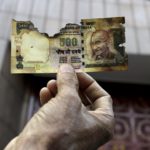A Holy Communion: Keane, Transduction and the Eucharist
Many people are drawn to the Church because they seek something greater: a more profound reality than what they experience on a day to day basis. This “something greater” influences how people envision change and possibility in the world. At its best, religious speech invites listener into deeper reflection on the human condition and its temporality, while proclaiming the possibility of accessing a more perfected and eternal world. The Christian Church utilizes transduction in many different forms in order to do so. The inscription “Do This in Remembrance of Me” is one example of transduction in the Christian worship space. The Christian Tradition attributes these words to Jesus of Nazareth, a 1st century historical figure, whom the Christian faith understands to be the reincarnation of God. These words are believed to have been delivered by him as he invited his disciples to eat and drink with him in a highly symbolic meal foreshadowing his death. While he instituted the Holy Eucharist with his disciples in this manner, many Christians participate in the Eucharist today as a commemoration meal of his death. Therefore, the phrase is often inscribed and visible on the side of Communion Tables (positioned in the front of the church). Clergy proclaim these same words during the Eucharistic service, yet the inscription announces this invitation to communion with the spirit realm long before the minister speaks. As stated by Keane, part of the appeal of the written as opposed to the vocal pronouncement lie in the notion that the written words continue to function even when the human agent is not engaged in activity.
Those within the Christian Church have long debated how this mysterious union is achieved, the classical doctrine of transubstantiation is helpful to consider. Transubstantiation was derived from Aristotle’s fundamental claim of the existence of substance and accidents in physical items. The “substance” is the essence of an item whereas the visible or tangible elements of an object are its accidents (i.e.- color, size, etc.) For example, one cannot touch substance, but only the accidents.
Theologian Thomas Aquinas later built upon Aristotelian thought and mounted his understanding of the Holy Spirit’s activity during the Eucharist. He asserted the bread and wine cease to be bread and wine in substance but the accidents remain the same during the Eucharist.
The elements are beleived to become the, real body and blood of Jesus of Nazareth. This is a claim which has and continues to be highly debate within the Christian Church, for example in the Second Helvetic Confession, Zwingli states the bread and wine to be a metaphor for the body and blood describing the Eucharist as a “ memorial meal” allowing those present to remember Christ in a uniquely powerful way. John Calvin argues for a different transaction of this mystical event believing the body of Christ to be in a spiritual heavenly realm and the Christian congregation to be in a temporal earthly realm, nevertheless, the obstacle of such vast local distance is fully overcome by the Holy Ghost in the sacramental act. He believes in the sacramental act, the outward symbols are received in an outward way, the very body and blood of Christ are at the same time inwardly and supernaturally communicated to the one who ingested it, for the real nourishment of new eternal life. Calvin states, Christians are lifted up into the heavenly realm by the power of the Holy Spirit joining them with Christ during the partaking of the Eucharist.
Like Keane, the Christian faith tradition has and continues to explore the powers and possibilities suggested in this type of materiality. Much like semiotic transduction, the Eucharist (or Holy Communion), focuses on movement, from invisible to visible (ie- Aquinas’ and Zwingli’s arguments of Jesus’s body and blood being present/ represented in the bread and wine, respectively) and from immaterial to material (i.e.- Calvin assertion of Christians being lifted up into the heavenly realms during the Eucharist). The Eucharist, like Keane’s detailing of transduction, draws power from a divine source in order to transcend the spiritual and human realms and calls those involved into greater communion among worlds.
References:
Aquinas, Thomas. Commentary on Aristotle’s Physics, Richard Blackwell, Et al. Continuum International Publishing Group.
The Book of Confessions
Craddock,Fred. As One Without Authority (Nashville: Abingdon Press, 1971),
Nevin, John Williams, The Mystical Presence: A Vindication of the Reformed or Calvinist Doctrine of the Holy Eucharist. (New York: Lippencott, 1846)
Webb, Keane. “On Spirit Writing: Materialities of Language and The Religious Work of Transduction.” JRAI, vol. 19, no. 1, 2013.
Contributed by ShelvisSmith-Mather on 03/02/2020






